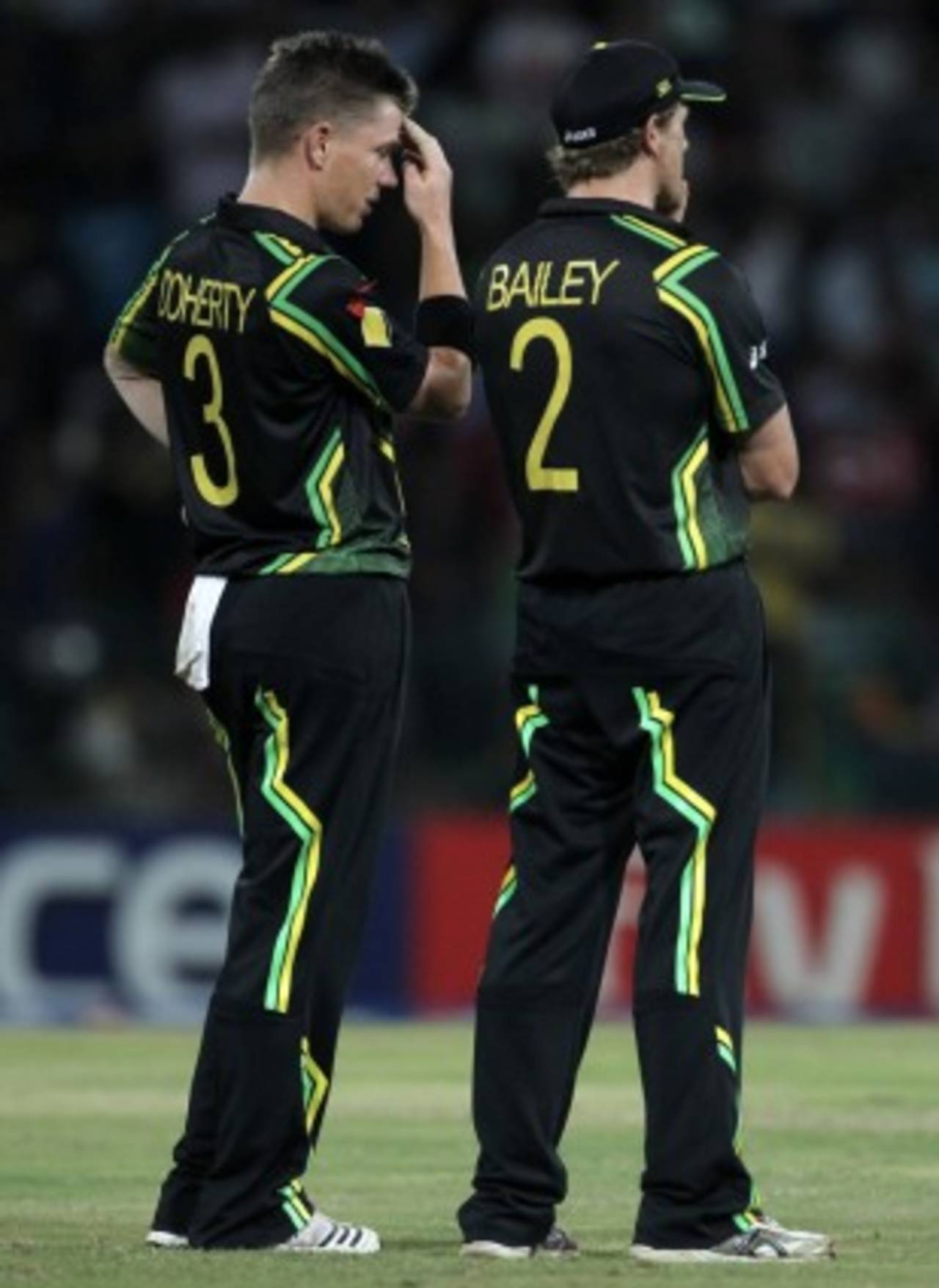George Bailey believes Australia's spin bowlers must find a way to be more effective on the subcontinent if the team is to have any chance of winning the next World Twenty20, to be held in Bangladesh in 2014. After returning home Monday Bailey also defended the form of the middle-order batsmen, who besides his own 63 in the semi-final loss to West Indies had little impact in the tournament as the top three carried the bulk of the workload.
Three days after Australia's tournament ended their exit might not have looked so bad, coming as it did against the eventual champions. However, one notable feature of the final was that both sides had outstanding finger-spinners with a mystery element: Sri Lanka's Ajantha Mendis was the tournament's leading wicket taker with 15 at 9.80 and the West Indian Sunil Narine was equal fourth with nine victims, including five in the semi-final and the decider.
Another bowler of similar ilk, Pakistan's Saeed Ajmal, was also equal fourth on the wicket tally and all three were miserly as well. In contrast, Xavier Doherty leaked 8.63 runs an over - his 1 for 48 from three overs in the semi-final seriously dented Australia's hopes - while Brad Hogg managed only two wickets in his six games and the allrounder Glenn Maxwell was equally ineffective. Bailey knows it will be almost impossible to win in Bangladesh in 2014 with a similar slow-bowling output.
"One of the things we need to look at is the way we bowl our spin," Bailey said. "I don't know any other way to describe it than as a Western-type way of bowling, which tends to be to try and draw the batsman out of the crease, whereas all the teams who have had success at the World Cup, their spinners are bowling into the wicket, quite fast, hitting the stumps every ball, making it very hard.
"We need to find a way to develop spinners like that, and the tough thing is maybe bowling like that doesn't really suit conditions in Australia. But I think if you look at all the stats from the tournament that was probably one of the areas that if we're serious about winning the tournament we're going to have to find a way to improve come Bangladesh."
During the World Twenty20, Muttiah Muralitharan said he believed one of the reasons Australia would not produce such a spinner was that unorthodox bowlers would be encouraged at junior levels to change their style. Bailey said it was important that young spinners with potential were identified regardless of whether they fit the Australian idea of what makes a good slow bowler.
"As a nation we still talk about whether guys have legitimate actions or not and at the end of the day that's really not for us to be arguing about," Bailey said. "If that's the rules and that's how bowlers are bowling now and having success in international cricket then we've got to start developing those players and developing them at 10-11 years of age and we start to have some bowlers who do bowl like Murali or Ajmal or Narine.
"You're hoping that a few of our spinners are watching the tournament [World T20] and seeing the type of spinners that are having success. I think the way our coaching system is set up it's going to be tough for some spinners to get through because the way a lot of the spinners who have had success bowl in the subcontinent, you're probably not going to be playing much cricket in Australia if you bowl like that. There's a balancing act there."
A lack of impact from the spinners cost Australia but there were also concerns about the imbalance in the batting order, with most of the runs coming from the openers Shane Watson and David Warner, and the No.3 Michael Hussey. Although opportunities were limited because of the success of the top three, there were still times when Australia needed runs from the middle order, notably in the semi-final.
Chasing 206, Australia were 29 for 3 and it was the perfect time for the rest of the batsmen to step up and back the work of Watson, Warner and Hussey from earlier in the tournament. Batting at No.5, Bailey blasted 63 from 29 balls but had no real support - Cameron White was caught down leg side for 5, David Hussey chipped a return catch for a duck and Matthew Wade top-edged a sweep.
"It's a tough one. If you're talking about winning the tournament, I think if you're winning a World Cup you're not talking about how well your four, five and six batted," Bailey said. "Your one, two and three need to get you the runs. Four, five and six come in and either get you to a reasonable total or save your bacon. But if you're winning the games it's your top three you need to rely on.
"I think whenever we're progressing through to the back end of one of these tournaments we're not going to be seeing much of the middle order. The challenge of the format is when you do get a chance you've got to be prepared to step up and make it your day."
Australia's exit before the final was a disappointing way for Bailey to end his first tournament in charge, but he said the memories wouldn't be all bad.
"To knock out South Africa and India as we did was really pleasing," he said. "I thought we played some really good cricket there. It's just a matter of when you do get to the knockout stages you've got to be able to play your best cricket."
Brydon Coverdale is an assistant editor at ESPNcricinfo. He tweets here
